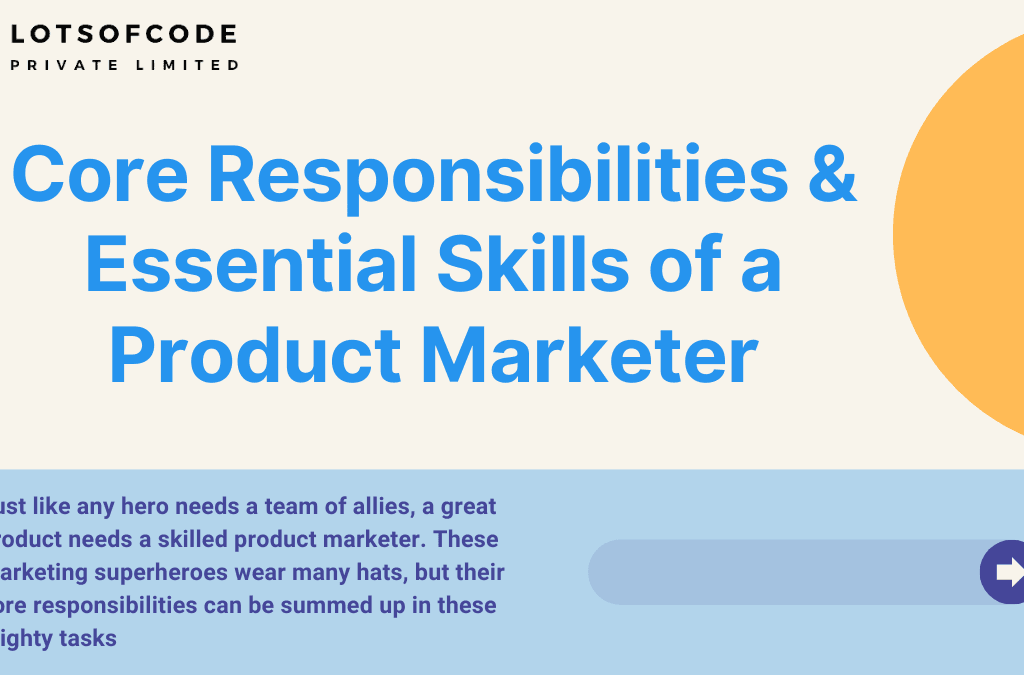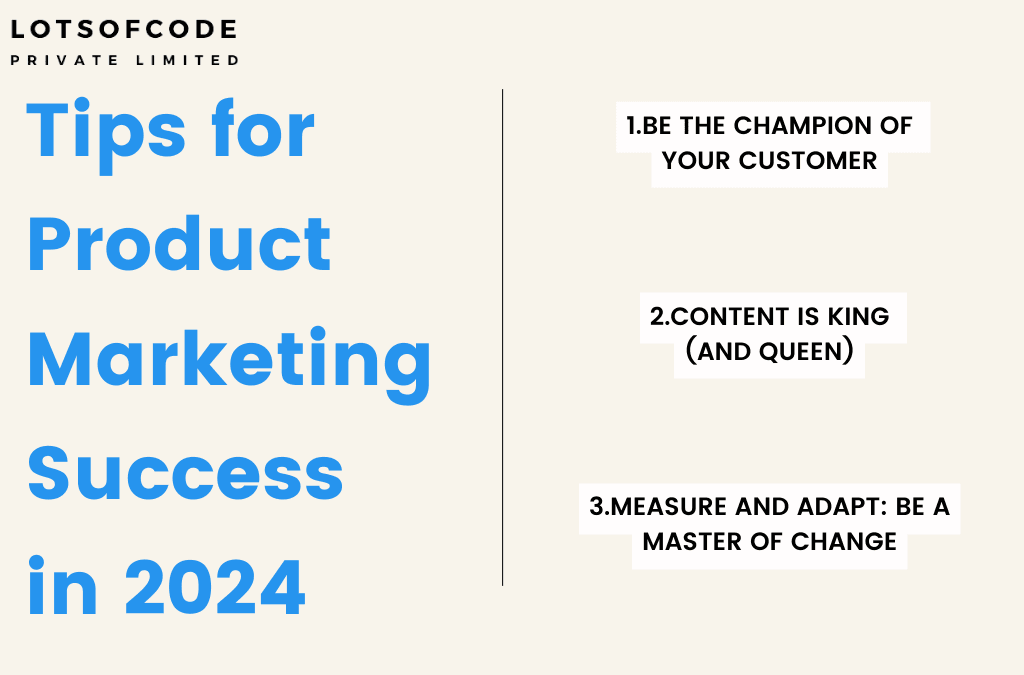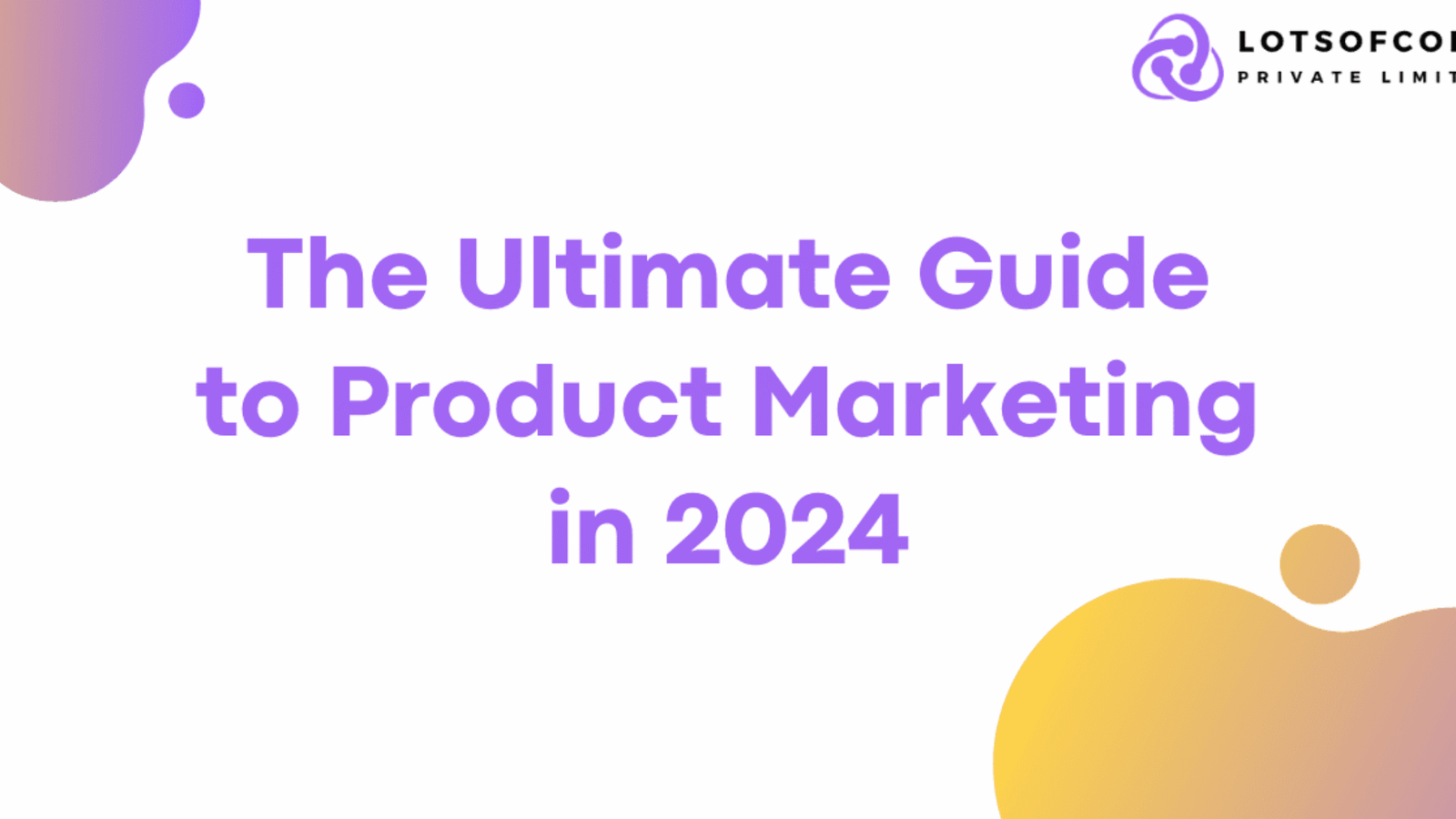Imagine this: you’ve built an amazing invention, something that could truly change people’s lives. But here’s the problem: no one knows about it. It’s hidden away in a workshop, gathering dust. That’s where product marketing comes in, like a superhero with a bullhorn.
What is Product Marketing in 2024
Product marketing isn’t just about selling things, it’s about telling a story. It’s about taking that incredible invention and explaining why it matters, how it makes life easier, and who it’s perfect for.
It’s like whispering secrets in the ears of the people who need it most.
In 2024, with so many cool products competing for attention, a good story is more important than ever. It’s the difference between your invention being the next big thing or just another forgotten gadget.
This guide will show you how to craft that story, how to use your superpowers (data and strategy) to find the right audience, and how to make sure your invention becomes a hero in its own right.
The Product Marketing Lifecycle
Imagine your product as a brilliant invention – it has the potential to change lives! But just like any hero, it needs a journey to reach its full potential. That’s where product marketing comes in, guiding your product through its exciting lifecycle:

The Secret Weapon - Pre-Launch Phase
Before your hero can save the day, you need to understand the enemy! This is the pre-launch phase, where product marketing acts like a detective. We use market research to uncover the challenges people face, and the villains in their story.
We identify the target audience, the people who need your hero the most.
Finally, we craft the perfect messaging, a battle cry that explains how your product defeats those challenges and makes life better.
The Big Reveal - Launch Phase
Now that you know your audience and their struggles, it’s time for your hero to step into the light! This is the launch phase, where product marketing becomes a strategist. We develop a go-to-market strategy, the master plan for introducing your product to the world.
This might involve exciting campaigns, like eye-catching ads or informative workshops, to build anticipation and get everyone talking about your hero.
The Hero's Journey Continues - Post-Launch Phase
Your hero has entered the battle, but the fight isn’t over! This is the post-launch phase, where product marketing acts like a wise mentor. We gather customer feedback, the whispers from the battlefield, to understand how your hero is performing.
We analyze this feedback to identify areas for improvement, maybe adding new features or refining existing ones. These product updates are like upgrades for your hero, making them even more powerful in their fight to help people.
Throughout this entire adventure, product marketing is always by your side, ensuring your hero’s story resonates with the right people and has a lasting impact. Now, are you ready to take your product from a secret weapon to everyone’s hero?
Core Responsibilities & Essential Skills of a Product Marketer
Just like any hero needs a team of allies, a great product needs a skilled product marketer. These marketing superheroes wear many hats, but their core responsibilities can be summed up in these mighty tasks:

Identifying Buyer Personas and Target Audience.
A product marketer is a master detective, uncovering the “who” behind your product’s success. They create detailed profiles called buyer personas, which are basically best friend descriptions of your ideal customer. These personas consider everything from their demographics to their challenges and desires. By understanding these “best friends,” the product marketer can tailor messages and strategies that resonate deeply.
Crafting Compelling Product Messaging and Positioning
Every hero needs a clear call to action, and that’s where compelling product messaging comes in. The product marketer acts as a wordsmith, crafting messages that not only explain what your product does but also how it solves the audience’s problems and makes their lives better. This messaging becomes the battle cry that attracts the right people and convinces them to join your hero’s cause.
Developing a Watertight Product Launch Strategy
The product launch strategy is like the master plan for your hero’s big debut. The product marketer acts as a strategist, plotting every step of the product’s introduction to the world. This plan might involve exciting launch campaigns, informative workshops, or strategic partnerships to generate buzz and get everyone talking about your hero.
Collaborating with Sales and Marketing Teams for a Unified Front
No hero goes it alone! Product marketers understand the importance of collaboration. They work closely with the sales and marketing teams to ensure a unified front. They provide sales teams with the information and resources they need to champion the product, while also collaborating with marketing on broader campaigns to build brand awareness and excitement.
Continuously Analyzing Product Performance and Market Trends
The product’s journey doesn’t end after launch. A great product marketer is constantly analyzing product performance and market trends. They use data and feedback to understand how the product is faring in the real world. This allows them to identify areas for improvement and make adjustments, like adding new features or refining existing ones. By constantly monitoring the battlefield, they ensure your hero stays relevant and continues to be a force for good.
These are just some of the essential skills that make product marketers the ultimate allies in your product’s journey. With their strategic minds, creative spirit, and collaborative nature, they empower your product to become the hero your audience needs.
2024 Trends Shaping Product Marketing (Still Relevant Today!)
The world of product marketing is ever-evolving, constantly adapting to keep pace with the dynamic digital landscape. While 2024 might be here, some key trends continue to shape the way we bring products to market. Here’s a glimpse into three forces that are defining product marketing success:
Data Drives the Mission
In today’s information age, data is no longer just a sidekick; it’s the trusty spaceship guiding your product’s journey. Product marketers are becoming data detectives, leveraging analytics to make informed decisions at every stage. This means using data to:
- Refine Target Audiences: Gone are the days of broad assumptions. Data helps us identify the exact demographics, interests, and online behavior of your ideal customers, ensuring your messaging laser-targets the right people.
- Measure Campaign Effectiveness: Forget guesswork! Data allows us to track the success of marketing campaigns, showing what resonates with your audience and what needs tweaking. This data-driven approach helps optimize campaigns for maximum impact.
- Personalize the Product Experience: Data empowers us to understand individual customer needs. This allows for product personalization, tailoring features and communication to each user’s specific journey.
Account-Based Marketing (ABM): Quality over Quantity
Forget casting a wide net – 2024 and beyond are all about strategic targeting. Account-Based Marketing (ABM) allows product marketers to focus their efforts on high-value accounts, tailoring campaigns to the specific needs and challenges of each key customer. This personalized approach fosters stronger relationships, increases engagement, and ultimately drives higher conversion rates.
Imagine instead of shouting your message to a crowded room, you’re having a one-on-one conversation with a potential customer who perfectly aligns with your product’s value. That’s the power of ABM!
Omnichannel Marketing: Meeting Your Audience Everywhere
Consumers today are bombarded with messages across various platforms. To truly connect, product marketers need to embrace omnichannel marketing. This means crafting a cohesive brand narrative that transcends a single channel and reaches your audience wherever they spend their time. This might involve:
- Social Media Engagement: Building awareness and excitement with interactive content on platforms like Instagram, TikTok, or Twitter.
- Compelling Website Content: Creating informative and engaging website content that educates potential customers about your product’s benefits.
- Targeted Email Campaigns: Delivering personalized email messages that nurture leads and drive conversions.
By creating a seamless experience across all channels, product marketers ensure that their message reaches the right people at the right time, wherever they are in the digital world.
These trends are just the tip of the iceberg, but they highlight the importance of data, strategic targeting, and reaching your audience on their terms. By embracing these strategies, product marketers can ensure their products not only survive but thrive in the ever-changing digital landscape.
Tips for Product Marketing Success in 2024 (and Beyond!)
The product marketing landscape may be ever-shifting, but the core principles of success remain constant. Here are three essential tips to propel your product toward victory in 2024 and beyond

Be the Champion of Your Customer
In the age of empowered consumers, understanding your customer is no longer a suggestion, it’s a battle cry! Successful product marketers become champions of their customer’s needs. This means:
- Deep empathy: Go beyond demographics. Understand the challenges, aspirations, and frustrations of your target audience. What keeps them up at night? How can your product be their ultimate weapon in their daily battles?
- Active listening: Don’t just talk, listen intently to customer feedback through surveys, social media interactions, and support channels. This feedback is a goldmine, revealing areas for improvement and opportunities to personalize your product and messaging.
- Building trust: Transparency and authenticity are key. By addressing customer concerns head-on and showcasing the real value your product delivers, you build trust and cultivate loyal brand advocates.
Content is King (and Queen)
In today’s information age, high-quality content reigns supreme. Product marketers wield the power of content to educate, engage, and ultimately convert potential customers. This means creating content that is:
- Informative and valuable: Don’t just talk about your product, educate your audience about the problems it solves and how it benefits them. Offer insightful blog posts, informative webinars, and helpful tutorials.
- Engaging and interactive: Captivate your audience with visually appealing content, like infographics and videos. Encourage interaction through social media polls, Q&A sessions, and user-generated content challenges.
- Tailored to your audience: Remember, one size doesn’t fit all. Create content that resonates with the specific needs and interests of your buyer personas.
By consistently delivering valuable content, you position yourself as a trusted advisor and establish your product as the solution to their problems.
Measure and Adapt: Be a Master of Change
The product landscape is dynamic, and what works today might not work tomorrow. That’s why successful product marketers are masters of adaptation. This means:
- Embrace data: Track key metrics like website traffic, conversion rates, and social media engagement. Data provides valuable insights into what’s working and what needs improvement.
- Be agile and adaptable: Don’t be afraid to adjust your strategies based on data and customer feedback. A/B testing different messaging approaches or optimizing landing pages can significantly improve your results.
- Embrace continuous learning: The world of marketing is constantly evolving. Stay ahead of the curve by attending industry conferences, subscribing to marketing blogs, and participating in online communities.
By continuously measuring your progress and adapting your approach, you ensure your product marketing efforts remain relevant and effective in the ever-changing digital battlefield.
Remember, these are just a few key ingredients for product marketing success. By focusing on your customer, wielding the power of content, and embracing the agility of data-driven decision making, you can ensure your product becomes the hero your audience craves.
Conclusion: The Hero Behind the Product
Product marketing isn’t just about selling things, it’s about crafting a compelling story that connects with your audience and positions your product as the hero in their journey. It’s the bridge between a brilliant invention and the people who need it most.
By understanding customer needs, crafting targeted messaging, and leveraging the power of data, product marketing ensures your product stands out from the crowd and delivers exceptional value. In today’s competitive landscape, a strong product marketing strategy is no longer a luxury, it’s a necessity for business success.
Remember, the world of product marketing is constantly evolving. New trends emerge, technologies change, and customer expectations shift. To stay ahead of the curve, continuous learning is key. Here are some resources to fuel your product marketing journey:
- Industry Publications: Subscribe to publications like The Product Marketing Alliance blog or MarketingProfs for insights from leading product marketing experts.
- Online Courses: Platforms like Coursera or Udemy offer a variety of product marketing courses that can help you refine your skills and stay updated on the latest trends.
- Industry Events: Attending conferences and workshops is a fantastic way to network with other product marketers, learn from industry leaders, and discover the newest product marketing strategies.
By embracing the ever-changing world of product marketing and continuously honing your skills, you can ensure your product becomes a hero, not just in 2024, but for years to come.
FAQs:Conquering the World of Product Marketing
What exactly does a product marketer do?
Product marketers are the storytellers of the product world. They bridge the gap between product development and the target audience, crafting compelling messages and strategies to ensure the product resonates with the right people.
What are the different stages of the product marketing lifecycle?
The product marketing lifecycle typically involves three stages: pre-launch (market research, target audience identification, messaging development), launch (go-to-market strategy, campaign execution), and post-launch (customer feedback analysis, product updates).
How do I identify my ideal customer (buyer persona)?
Market research and data analysis are key. Look at demographics, interests, online behavior, and challenges faced by your target audience to create a detailed profile of your ideal customer.
What makes product messaging effective?
Compelling product messaging is clear, concise, and speaks directly to the customer’s needs. It highlights how your product solves their problems and improves their lives.
What's the difference between product marketing and marketing?
Product marketing focuses specifically on a particular product, while marketing encompasses a broader range of activities to promote a company’s brand and all its offerings.
How can I use data to improve my product marketing efforts?
Data is your best friend! Analyze website traffic, conversion rates, and social media engagement to understand what resonates with your audience and identify areas for improvement.
What's Account-Based Marketing (ABM) all about?
ABM focuses marketing efforts on high-value accounts, tailoring campaigns to the specific needs and challenges of each key customer.
How can I create a successful product launch strategy?
Develop a clear go-to-market plan that outlines your target audience, messaging, launch channels, and promotional activities to generate excitement for your product.
What's the importance of omnichannel marketing in product marketing?
Today’s consumers are everywhere! Omnichannel marketing ensures your message reaches them across various platforms like social media, email, and your website.
Why is customer focus so crucial in product marketing?
Understanding your customer’s needs and challenges is paramount. By focusing on them, you can tailor your product and messaging for maximum impact.
What kind of content should I create for product marketing?
High-quality content informs, educates, and engages your audience. Think blog posts, infographics, videos, and tutorials that showcase your product’s value.
How can I measure the success of my product marketing campaigns?
Track key metrics like website traffic, conversion rates, and social media engagement to understand your campaign’s effectiveness and identify areas for optimization.
Is product marketing a good career path?
Absolutely! Product marketing is a dynamic and rewarding field that combines creativity, strategy, and data analysis. It offers ample growth opportunities for those passionate about connecting products with the right audience.
What skills are essential for a successful product marketer?
Strong communication, analytical thinking, customer empathy, and content creation skills are all valuable assets for product marketers.
How can I stay updated on the latest trends in product marketing?
Subscribe to industry publications, attend conferences and workshops, and take online courses to stay ahead of the curve and refine your product marketing expertise.

